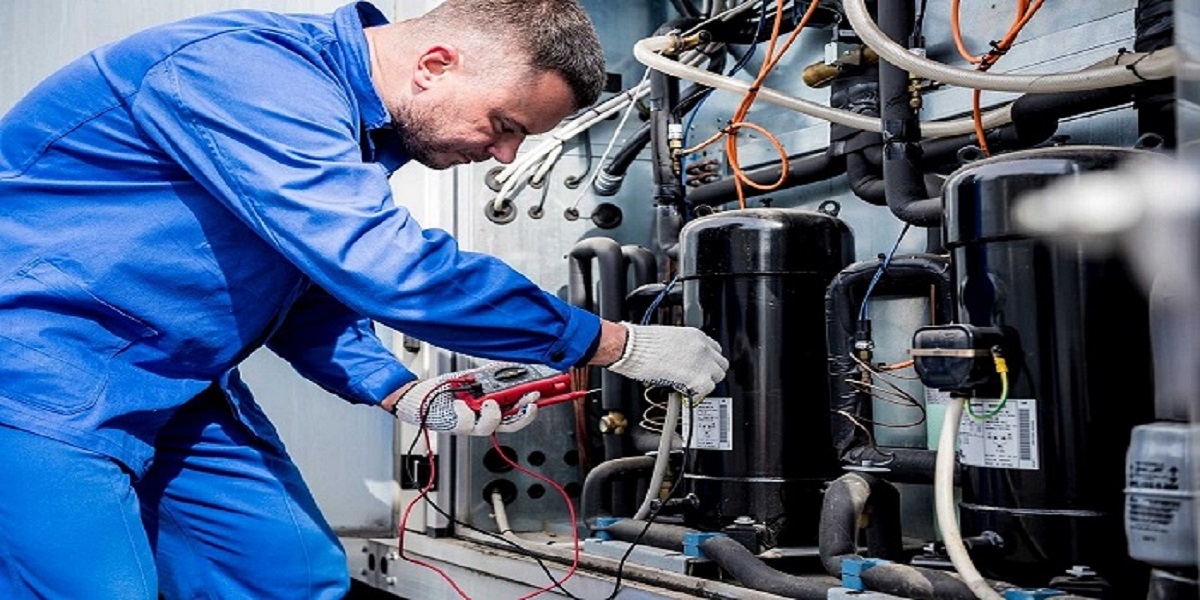Commercial Chiller Repair are the backbone of temperature regulation in various industries. From healthcare facilities to manufacturing plants, they ensure that critical processes run smoothly. However, like any mechanical system, chillers can encounter problems that require repair. This guide delves into the essentials of commercial chiller repair, its importance, and tips for maintaining your system to minimize downtime.
What Are Commercial Chillers?
Commercial chillers are large-scale cooling systems designed to remove heat from a liquid, often water or a water-glycol solution, which is then circulated through a facility. These systems are used in industries such as:
- Healthcare: To cool medical equipment and maintain suitable indoor environments.
- Food and Beverage: For refrigeration and maintaining product quality.
- Manufacturing: To cool machinery and maintain process integrity.
- Data Centers: To prevent overheating of servers.
There are two main types of chillers:
- Air-Cooled Chillers: Use ambient air to dissipate heat.
- Water-Cooled Chillers: Use water from a cooling tower for heat dissipation.
Both systems are vital but require regular upkeep to ensure optimal performance.
Common Issues That Require Commercial Chiller Repair
Understanding common chiller problems can help identify issues early, minimizing repair costs and downtime. Here are some frequent problems:
1. Refrigerant Leaks
Refrigerants are essential for the cooling process. Leaks can lead to reduced efficiency and environmental harm. Signs of a refrigerant leak include:
- Reduced cooling capacity
- Hissing sounds near the chiller
- Ice formation on the evaporator coil
2. Compressor Failure
The compressor is the heart of the chiller. If it fails, the entire system can shut down. Common causes include:
- Overheating
- Electrical issues
- Lack of lubrication
3. Clogged Condenser Coils
Dirty or clogged coils hinder heat dissipation, forcing the chiller to work harder. This can lead to higher energy consumption and potential system failure.
4. Pump and Motor Malfunctions
Pumps and motors circulate the chilled liquid. Malfunctions can cause inadequate cooling and system inefficiency.
5. Control Panel Issues
Faulty control panels can lead to inaccurate temperature settings or complete system shutdowns. Electrical faults are a common culprit.
Why Timely Commercial Chiller Repair Matters
Delaying repairs can have severe consequences, including:
- Increased Operational Costs: Faulty chillers consume more energy.
- System Downtime: Downtime affects productivity and service delivery.
- Equipment Damage: Ignored issues can escalate, requiring expensive replacements.
- Safety Risks: Malfunctioning chillers can pose safety hazards to personnel.
Steps in Commercial Chiller Repair
A systematic approach is essential for efficient chiller repair. Here’s what the process typically involves:
1. Initial Inspection
Technicians inspect the system to identify visible signs of wear, leaks, or malfunctions. Advanced diagnostic tools may be used for detailed assessments.
2. Diagnosis
Based on the inspection, technicians determine the root cause of the issue. Common diagnostic tools include:
- Refrigerant leak detectors
- Infrared cameras
- Multimeters for electrical testing
3. Repair or Replacement
Depending on the severity, repairs may involve replacing faulty components, fixing leaks, or cleaning clogged parts. In severe cases, entire units or systems might need replacement.
4. Testing and Calibration
After repairs, the system is tested for functionality. Temperature settings and other parameters are calibrated to ensure optimal performance.
5. Documentation and Reporting
Technicians provide a report detailing the issue, repair process, and preventive measures.
Tips to Avoid Frequent Chiller Repairs
Preventive maintenance is the key to reducing repair frequency. Here are some tips:
1. Schedule Regular Maintenance
Routine inspections help identify potential problems before they escalate. A professional maintenance schedule includes:
- Cleaning condenser coils
- Checking refrigerant levels
- Inspecting electrical components
2. Monitor System Performance
Install monitoring systems to track performance metrics such as:
- Temperature fluctuations
- Energy consumption
- Pressure levels
3. Replace Filters Regularly
Dirty filters can impede airflow and reduce efficiency. Replace filters according to the manufacturer’s guidelines.
4. Ensure Proper Ventilation
For air-cooled chillers, ensure adequate airflow around the unit to prevent overheating.
5. Train Staff
Educate employees on basic chiller operation and troubleshooting to address minor issues promptly.
Choosing a Reliable Commercial Chiller Repair Service
When selecting a repair service, consider the following:
1. Experience and Expertise
Choose a provider with extensive experience in handling various chiller types and brands.
2. Certifications
Look for certifications such as:
- EPA certification for refrigerant handling
- Manufacturer-specific training certifications
3. 24/7 Availability
Chiller issues can arise anytime. Ensure the provider offers round-the-clock emergency services.
4. Comprehensive Services
Opt for a provider offering both repair and maintenance services to simplify management.
5. Customer Reviews
Check online reviews and testimonials to gauge customer satisfaction and service quality.
The Cost of Commercial Chiller Repair
Repair costs vary based on factors such as:
- Type of Issue: Minor repairs like replacing filters are less expensive than fixing compressor issues.
- System Size: Larger systems generally have higher repair costs.
- Replacement Parts: Genuine parts from the manufacturer can increase costs but ensure quality.
On average, businesses can expect to spend anywhere from $500 to $5,000 on repairs, depending on the complexity.
Final Thoughts
Commercial chiller repair is an essential aspect of maintaining a functional and efficient cooling system. By addressing issues promptly and investing in preventive maintenance, businesses can avoid costly downtime and ensure smooth operations. Remember to partner with a reliable repair service to maximize the lifespan and performance of your chiller system.
